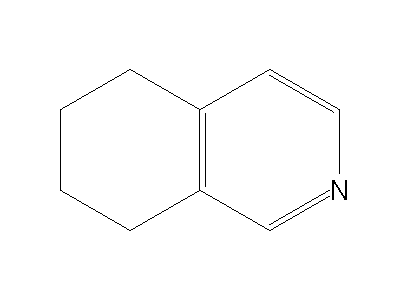Formula C9H11N Density 1.05 g/cm³ Appearance Deep yellow liquid | Molar mass 133.19 g/mol Melting point -30 °C Pubchem 7046 | |
 | ||
Tetrahydroisoquinoline (TIQ) is an organic compound with the chemical formula C9H11N. Classified as a secondary amine, it is derived from isoquinoline by hydrogenation. It is a colorless viscous liquid that is miscible with most organic solvents. The tetrahydroisoquinoline skeleton is encountered in a number of bioactive compounds and drugs.
Contents
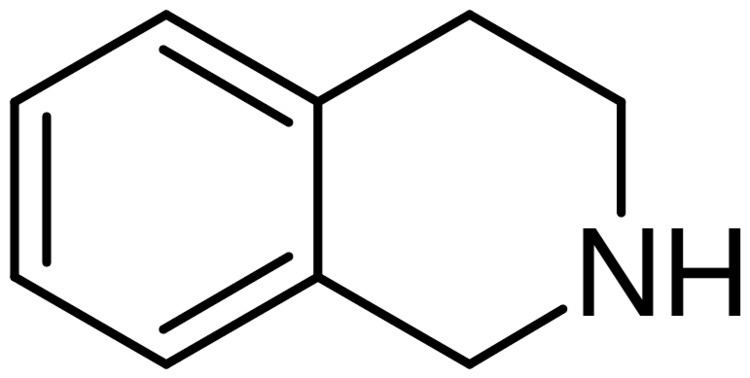
Reactions
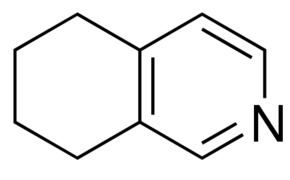
As a secondary amine, tetrahydroisoquinoline has weakly basic properties and forms salts with strong acids. It can be dehydrogenated to give isoquinoline and hydrogenated to decahydroisoquinoline. Like other secondary amines, tetrahydroisoquinoline can be oxidized to the corresponding nitrone using hydrogen peroxide, catalyzed by selenium dioxide.
Toxicology
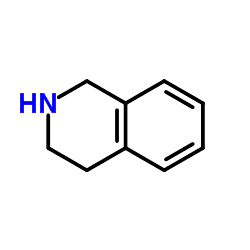
Tetrahydroisoquinoline derivatives may be formed in the body as metabolites of some drugs, and this was once thought to be involved in the development of alcoholism. This theory has now been discredited and is no longer generally accepted by the scientific community, but endogenous production of neurotoxic tetrahydroisoquinoline derivatives such as norsalsolinol continue to be investigated as possible causes for some conditions such as Parkinson's disease.
Tetrahydroisoquinolines
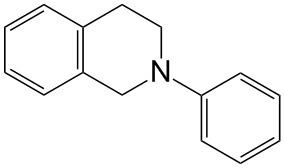
The tetrahydroisoquinoline skeleton is encountered in a number of drugs, tubocurarine, one of the quaternary ammonium muscle relaxants. Drugs based on 4-substituted tetrahydroisoquinolines include nomifensine and diclofensine. They can be prepared by N-alkylation of benzyl amines with haloacetophenones. Naturally occurring tetrahydroisoquinolines includes cherylline. and latifine.
Esproquin, which shows hypotensive activity by virtue of its α-adrenergic blocking properties, is made from THIQ.
